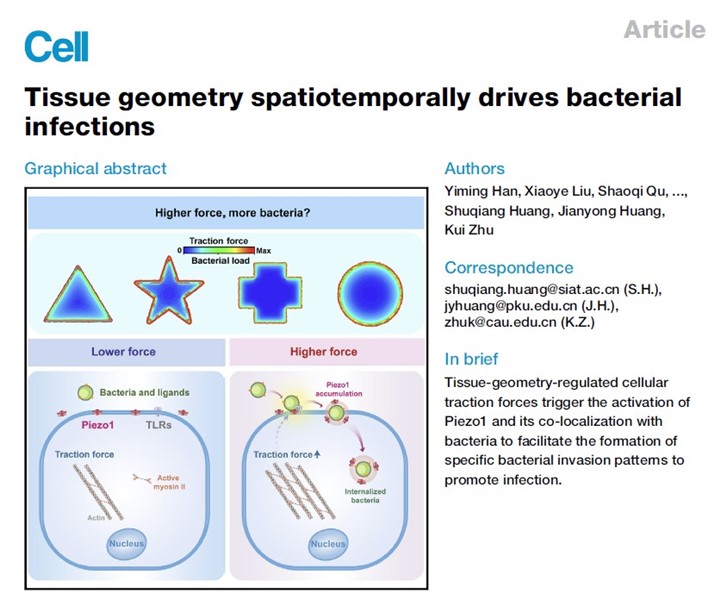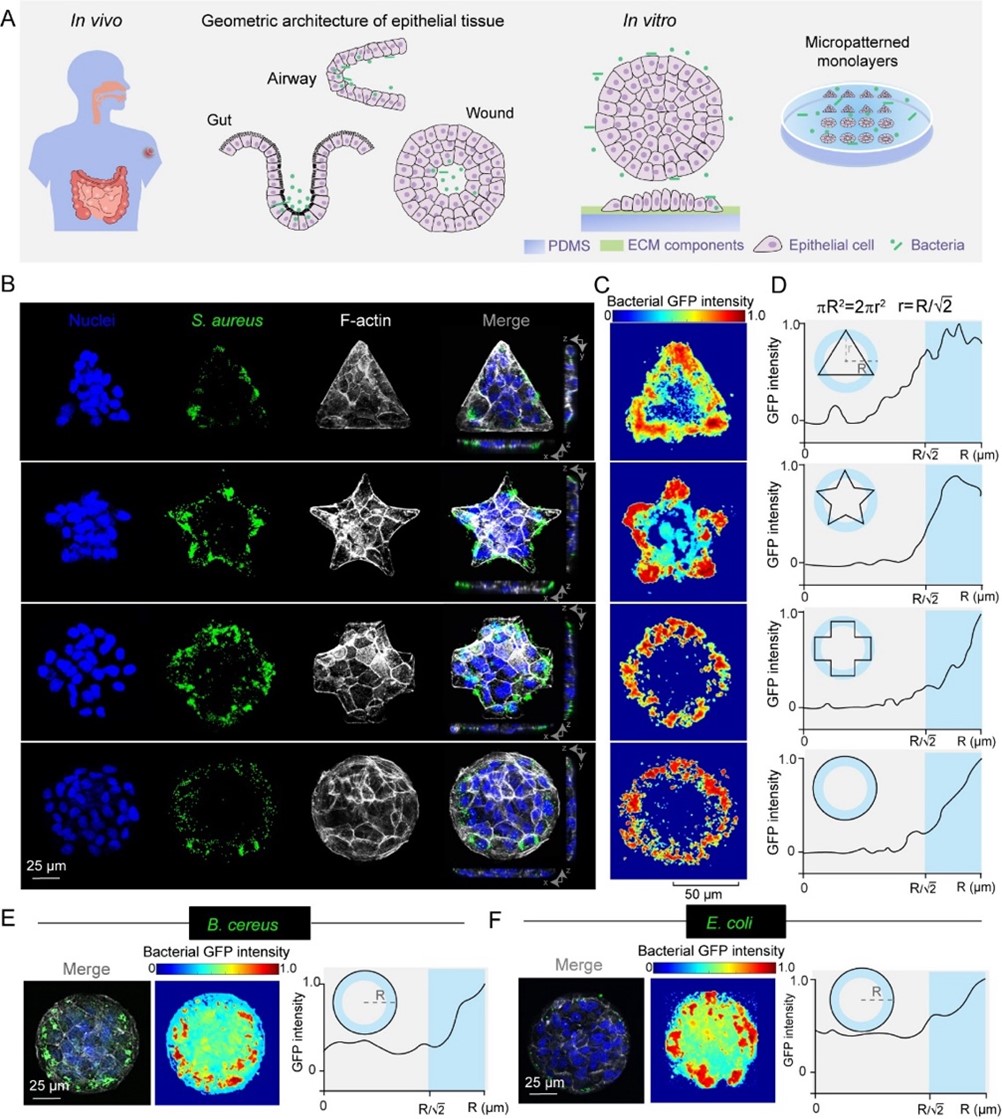Peking University, May 8, 2025: A research team led by Huang Jianyong from Peking University’s College of Engineering has uncovered a novel mechanism by which tissue geometry regulates bacterial infection dynamics. Published in Cell, the study employs an innovative multidisciplinary approach to reveal how host tissue structure, mechanical forces, and cellular signaling collectively shape infection patterns.

Figure. 1. Schematic diagram of host cell traction regulating bacterial infection.
Why It Matters
Bacterial infection is a complex and dynamic process involving constant interactions between pathogens and host tissues. While the biochemical basis of infection is well established, the role of the mechanical environment has remained underexplored. This study shows that tissue geometry alters cell traction forces, influencing where and how bacteria invade epithelial layers. It also highlights Piezo1, a mechanosensitive ion channel protein, as a key player in force-dependent signaling during infection, offering new avenues for host-directed antibacterial strategies.
Key Findings
• Bacteria selectively infect epithelial regions with higher mechanical stress, exhibiting a "marginal effect."
• The mechanosensitive ion channel Piezo1 mediates bacterial invasion by amplifying force-dependent signaling at infection sites.
• Tissue geometry and cell density dictate the spatial distribution of bacterial infections, challenging the traditional view of random pathogen spread.
• Targeting Piezo1-related pathways could lead to new host-directed therapies against antibiotic-resistant infections.

Figure. 2. Bacteria selectively infect the host cell monolayer.
Future Implications
This work establishes a mechanobiology framework for infection research, merging biomechanics and microbiology to explain how physical forces influence pathogen behavior. By revealing the critical role of tissue architecture in infection, the study opens avenues for anti-infective strategies that exploit host mechanical defenses, a crucial advance in the era of rising antimicrobial resistance.
*This article is featured in the "Why It Matters" series. More from this series.
Click “
here” to read the paper.
Written by: Akaash Babar
Edited by: Zhang Jiang
Source: College of Engineering, Peking University

